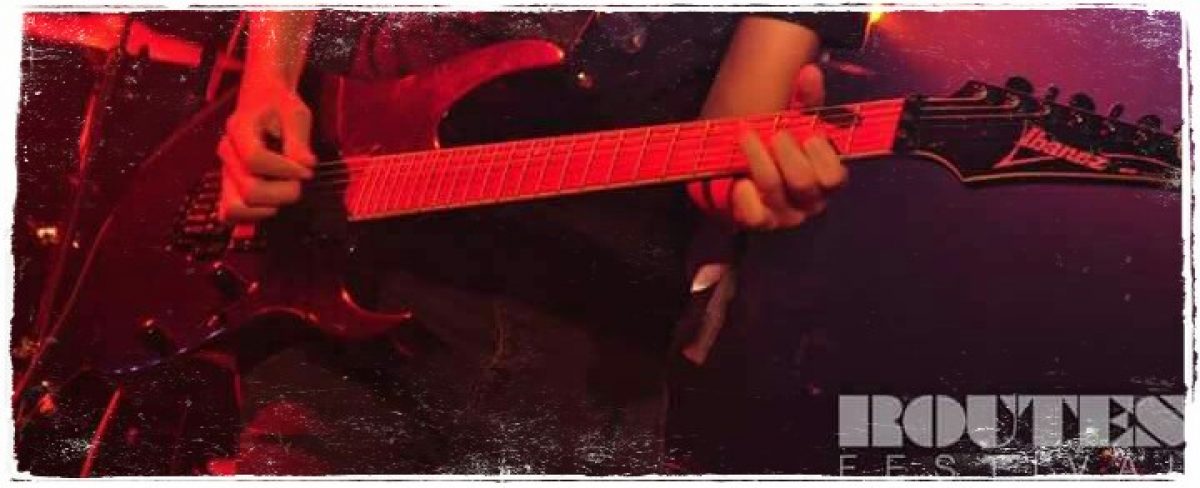Stylistically, Bob Marley produced a reggae sound and has been played a big part in its popularisation. One of the most recognisable and common characteristics in reggae music is the emphasis on off-beat rhythms. This can be achieved in multiple ways, for example: Staccato chords played by guitar or keys, call and response between two instruments, or by accenting beats 2 and 4 on the bass or drums. Another common characteristic of reggae as I have just mentioned is call and response aspects. This is commonly done by melodic instruments such a guitars or keys often using short melodies or alternate rhythms. The rhythm used in almost all reggae music is called a ‘Skank’ or ‘Ska Stroke.’ This is a guitar strumming technique that uses staccato on beats 2 and 4, more often than not played with an upstroke. (as seen below)
Reggae downstroke pattern Reggae upstroke pattern


Horn sections play a big part in reggae providing intro melodies and counter melodies, often following the vocal parts in sections. A typical horn section in a reggae band would usually contain: Saxophones, trumpets, or a trombone.
The drums (my role in the band) are usually set up as a standard rock kit, the only real difference is that the snare drum is often tuned much higher than normal to replicate the tonality of timbales – a shallow single-headed drum with a metal casing. Some reggae drummers use additional timbales or snares to achieve this sound. Cross-stick technique is often used on the snare drum and the tom-toms are often incorporated into the drum beat.
The drumbeats used in reggae usually fall into one of three categories: One-drop, Rockers, and Steppers.
In the one-drop rhythms, the emphasis is purely put on the backbeat using the snare or a rim shot combined with a kick drum. Beat one is completely empty except for the closed hi-hat which stays constant throughout, which is unusual in popular music, and this is where the name ‘One-drop’ comes from as you ‘drop’ the first beat of the bar.
 Half time variant One-drop pattern
Half time variant One-drop pattern
 Basic One-drop pattern
Basic One-drop pattern
The emphasis on the backbeat is found in all reggae beats, but with the ‘Rockers’ beat the emphasis is on all four beats of the bar. A basic form of this beat would have a drum strike on each beat often the bass drum then a snare, it sometimes combines bass with a snare or rim shot to emphasise this feel further. While this sounds simple enough, the rockers beat can become very intricate and various syncopations are often used.
 Basic rocker beat
Basic rocker beat
A ‘steppers’ beat is similar to the rocker beats in the way it emphasises each beat of the bar, however it must have a bass drum strike on each quater note of the bar giving this beat a constant insistant drive. This beat is also referred to as ‘four on the floor’ due to the four kicks per bar. Like the rocker beats, this pattern can also be expanded upon with added strikes to build up the rhythm.
 Standard stepper beat
Standard stepper beat
As for lyrical content, Bob Marley was a dedicated Rastafarian, and was raised around believing in peace and love. This can easily be noticed in his lyrical content of many of his songs, for example ‘Is This Love.’ Not only this, but he was born just as the second world war had come to an end, and grew up under the threat of the cold war between the United States, and Russia. He was living in a time of great conflict around the world; this was contrary to his beliefs and therefore another influential factor in his compositions. He also wrote about historical conflict, such as the Slave trade in the very popular song ‘Buffalo solider.’
Musically, he was influenced by musical styles such as reggae, ska, and rocksteady. He wrote in the style of reggae, and would often incorporate techniques used in styles such as rhythm and blues, and jazz. The instrumentation would typically be a standard band consisting primarily of drums, bass, guitar, keyboard, and vocals. due to reggae being a very laid back genre of music, the keys and guitars would typically use a few improvisational elements when necessary. The drums are typically using a version of one of three main rhythms: One Drop, Rockers, and Steppers. Essentially the drums put emphasis on the backbeat, and will play sparse parts usually with some form of swung feel. The bass is the driving force in reggae, primarily holding the route notes and moving in between them to keep the piece moving forward.
Bob Marley’s sound will have been influenced by other musicians, such as the two american artists ‘James Brown’ – a funk artist, and ‘Curtis Mayfield’ – one of the most influential artists behind soul and R&B music.
Since his time, Bob Marley has gone on to inspire almost all new reggae artists, and many artists from contrasting styles such as ‘The Rolling Stones.’ A good example of a band inspired by him is The Fugees – an American hip-hop group who rose to fame in the 1990’s, who used elements of soul and Caribbean music in their repertoire; particularly reggae.
Bob Marley has been credited by artists and audiences all over the world with singlehandedly popularising reggae music as a whole worldwide, and has most definitely left his permanent mark in the world of music.
